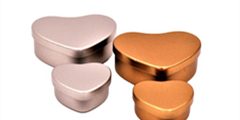Tin boxes stand as a testament to the artistry and functionality that come together in packaging design. In this blog post, we delve into the craftsmanship behind tin boxes, exploring the intricate process of their creation and the blend of creativity and practicality.
Design Ideation: The process begins with brainstorming and sketching designs that align with the brand’s identity and product requirements.
Material Selection: High-quality tinplate is selected, ensuring durability and suitable material thickness for the intended purpose.
Tooling and Die-Cutting: Specialized tools and dies are used to cut, shape, and form the tin sheets into box components.
Printing Techniques: Advanced printing techniques, such as offset printing and embossing, bring designs to life on the tin surface.
Assembly and Sealing: Tin box components are meticulously assembled and sealed using soldering or adhesive techniques.
Quality Control: Each tin box undergoes thorough quality checks to ensure it meets design standards and functionality requirements.
Custom Finishes: Finishes like matte, gloss, or textured coatings enhance the visual appeal and tactile experience of tin boxes.
Market Application: Tin boxes find application in industries ranging from cosmetics and food to luxury goods and collectibles.
In conclusion, the craftsmanship behind tin boxes involves design ideation, material selection, tooling, die-cutting, printing techniques, assembly, quality control, custom finishes, and market application. This blend of artistry and functionality results in packaging that stands as a unique expression of a brand’s identity and product excellence.

















